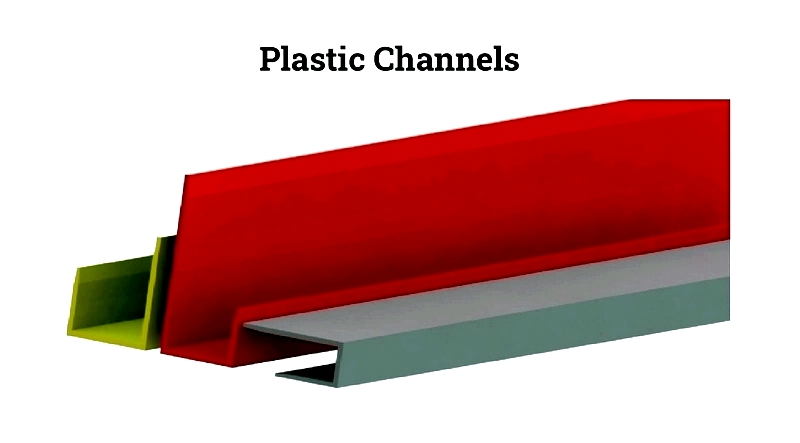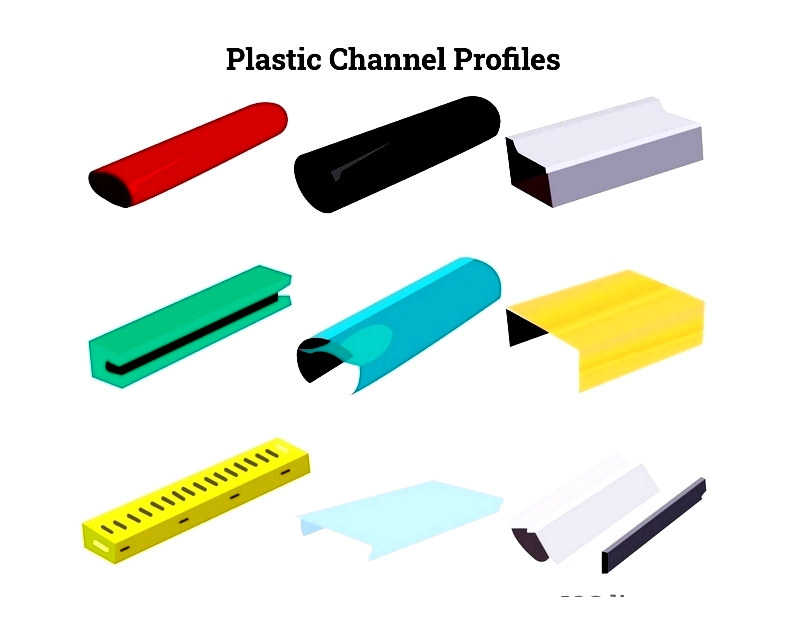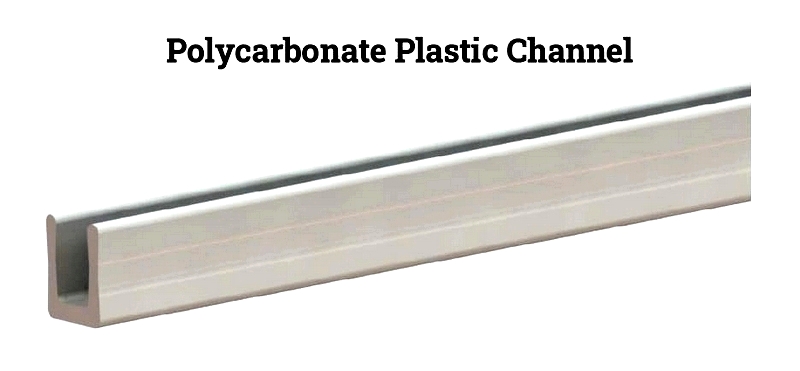Introduction
This article provides an in-depth exploration of plastic channels' versatile applications across various industries.
You'll discover detailed information on topics including:
- Definition of plastic channels
- Materials used in plastic channel production
- Manufacturing processes
- Practical applications
- And more...

Chapter 1: Understanding Plastic Channels
Plastic channels are extruded plastic products featuring linear profiles with consistent cross-sections. These slender, shallow structures serve multiple purposes, including covering rough edges for decorative finishes, functioning as connectors, sealants, insulators, and structural components. Widely used in construction and electronics, they come in standard shapes (U, H, J, C, L) with options for custom designs. Plastic extrusion is the primary manufacturing method.

Chapter 2: Materials for Plastic Channel Production
Thermoplastics form the basis of most plastic channels. These polymers can be melted and reshaped repeatedly without significant degradation, offering processing efficiency and recyclability. Unlike thermosetting polymers, thermoplastics maintain versatility for customized profiles across construction, electrical, and automotive industries.
Different thermoplastic resins are selected based on end-use requirements, offering unique advantages like chemical resistance, impact strength, UV stability, flame retardance, or flexibility. These properties determine the ideal material for applications from construction to cable management.
Common plastic materials include:
Polyvinyl Chloride (PVC)
PVC is a cost-effective, rigid thermoplastic known for durability, chemical resistance, electrical insulation, and flame retardancy. Its chlorine content enhances fire safety, making it ideal for moisture-resistant applications and electrical cable management.
Available as powder or granules, PVC replaces traditional materials like wood and metal in architectural projects and wire protection. It's standard for cable raceways, edge protection, and U-channels. Plasticized PVC offers flexibility for cushioning applications, while rigid PVC provides strength for load-bearing structures.
Chlorinated Polyvinyl Chloride (CPVC)
CPVC, with higher chlorine content than PVC, offers improved heat tolerance and chemical stability. Suitable for hot water systems and industrial piping, it's commonly used in chemical processing and HVAC applications.

Acrylonitrile Butadiene Styrene (ABS)
ABS combines impact resistance with chemical stability, making it suitable for technical applications. Its low melting point facilitates extrusion for architectural detailing and model making, with easy assembly using solvents or adhesives.
High Impact Polystyrene (HIPS)
HIPS is an affordable, lightweight material with impact resistance and printing compatibility. Its anti-static properties make it ideal for electronics housings and automotive trims.
Green RoHS Vinyl
This eco-friendly vinyl complies with EU regulations, containing reduced hazardous substances. Made from 57% seawater, it's energy-efficient and suitable for healthcare and sustainable construction projects.
Polyethylene (PE)
PE offers excellent chemical resistance and moisture barrier properties. Key grades include:
- UHMWPE: High abrasion resistance for medical and food processing equipment
- HDPE: Rigid material for harsh industrial environments
- MDPE: Balanced properties for utility applications
- LDPE: Flexible option for non-structural uses
Polypropylene (PP)
PP provides chemical resistance and fatigue strength at low cost, commonly used for cable protection and automotive components.
Thermoplastic Elastomer (TPE)
TPEs combine rubber-like elasticity with plastic processability, ideal for sealing and vibration-damping applications.
Thermoplastic Polyurethane (TPU)
TPU offers superior abrasion resistance and flexibility for protective covers and outdoor equipment.
Polycarbonate
This transparent, impact-resistant material suits safety-critical applications like medical devices and electrical enclosures.

Cellulose Acetate Butyrate
CAB provides UV resistance and decorative appeal for retail displays and signage applications.
Material selection should consider mechanical properties, regulatory compliance, environmental factors, and cost. For custom profiles, consult experienced manufacturers to meet specific application requirements.




